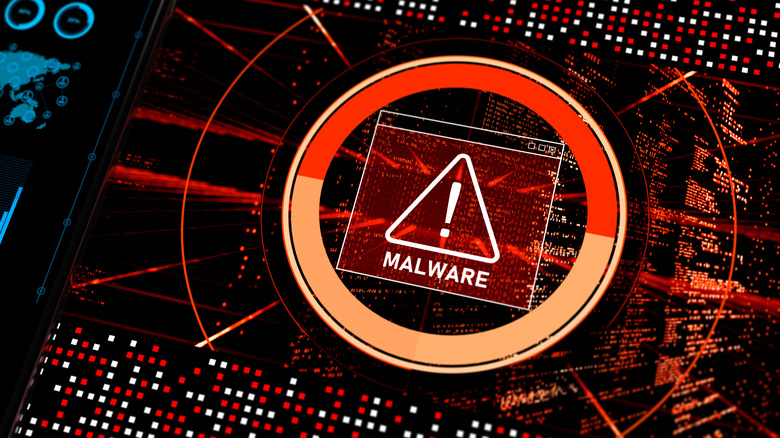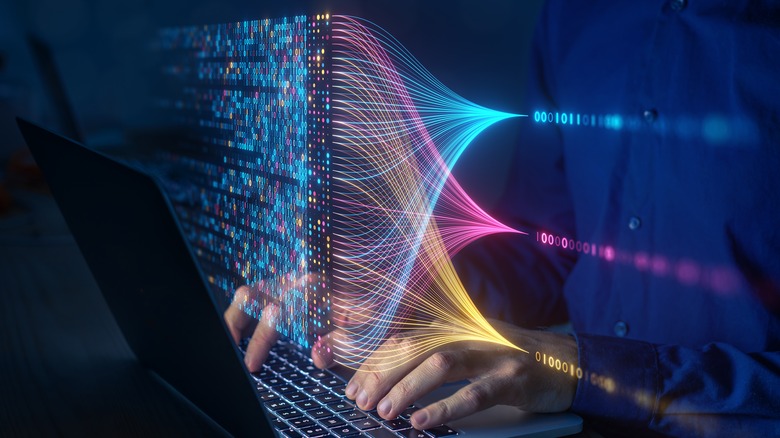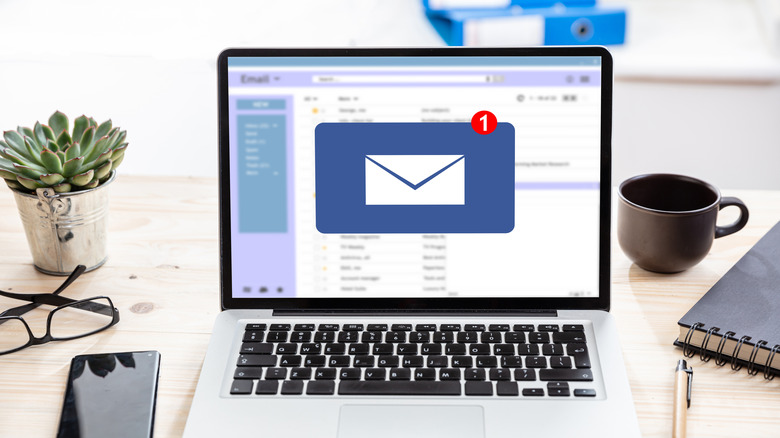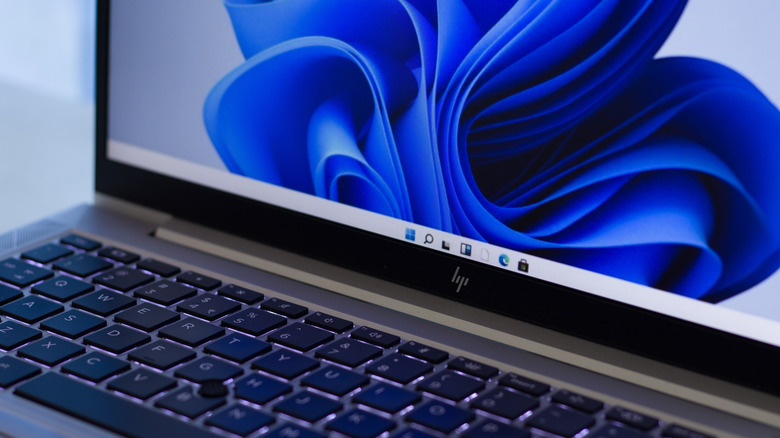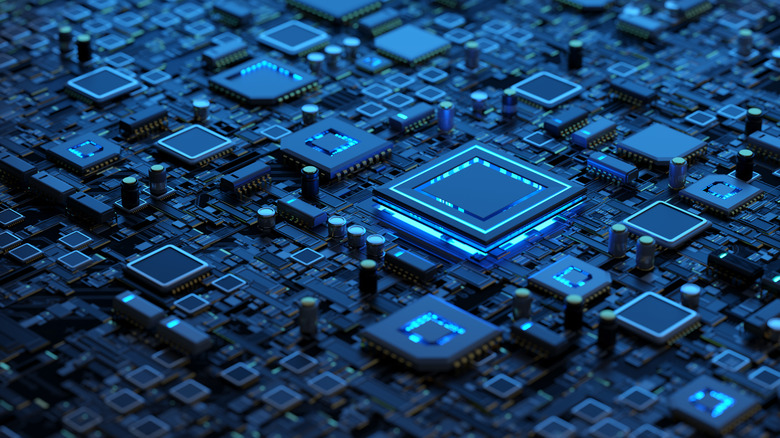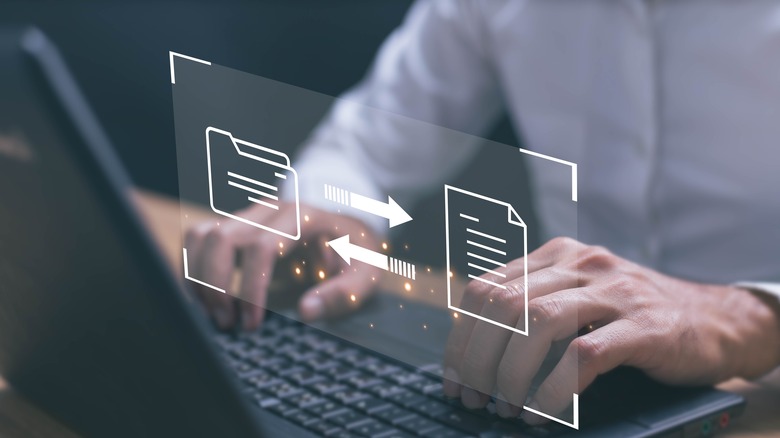6 Signs Your Computer Could Be Infected With Malware
In the digital age, our lives have become inexplicably intertwined with the internet. From paying our bills, and going to school, to doing our jobs, its ubiquity has changed the world in ways we could have never previously imagined. However, convenience does come with a price, especially when malicious people have learned to use it in their favor to spread malware.
Short for "malicious software," the Cambridge Dictionary describes malware as "computer software that is designed to damage the way a computer works." However, these days, it's no longer limited to computers, because you can also find malware on your Android or iPhone.
In 2023, Astra claims that 560,000 new examples of malware are detected every day, and over a billion nefarious programs are already known to exist. In the first half of 2022 alone, over 236 million ransomware attacks incurred an average cost of $4.54 million per incident.
While malware can obviously create problems for large corporations, it can also hurt ordinary people. In fact, having malware on your computer can lead to loss of money, livelihood, and even personal safety. According to AAG, at least 15.45% of internet users in the world have experienced at least one malware-class attack in 2021. Knowing this, it's highly likely that most users will encounter malware at some point when working online, but there are some telltale signs to determine if your device has been compromised.
Sluggish performance
Depending on what kind of infection or virus programs are present, one way that malware can manifest is by making your computer feel sluggish. However, while things like slow startups or shutdowns, delayed application launches, or unexplained app crashes are almost always signs that something is wrong, it is important to know that there could be plenty of other reasons why your PC is slow.
So, before you assume that malware is the problem, you can try to do things to isolate the issue; such as defragmenting your HDD, removing unnecessary apps, and following other tips to make your Windows run like new again. For Mac users, some of the common reasons your Mac could be slow are that you have too many power-hungry apps open, you don't have any disk space, or you need to update your macOS to a more recent version.
Once you've exhausted all other options, you can circle back and observe if your Windows or Mac computer is still not working optimally. In general, if you noticed that your new PC or MacBook is already showing signs of slowing down after only a few months of regular use, there's a chance it may be affected by malware.
Unusual network activity
With better threat detection processes launched every year, malware creators are also finding more advanced ways to create software that can avoid detection. According to cybersecurity company Proofpoint, there are several unusual network activities that can indicate if your device has been compromised with malware.
For example, hackers can sometimes trigger the software to collect and send data to their controlled servers during off-peak hours to avoid detection. In some cases, it cites traffic communications with suspicious IP addresses, which could lead to strange geographic locations.
Aside from this, Utilities One also cautions that malware could contribute to excessive data charges. Likening malware to digital pests, it claims that malware can perform a series of activities that consume data without your consent. In some cases, malware can stream media files on your device, perpetually sync data in the background, hijack your connection to visit advertising sites, or even become part of a larger network of infected devices, which are used to flood websites with traffic and other nefarious methods.
To check for your network usage, LMG Security suggests installing free network monitoring tools for your computer, such as Wireshark and Argus. With these, you'll be able to capture and analyze packets and flow records, which can reveal your network activity. Alternatively, you can use Wi-Fi analyzing tools to diagnose your internet issues, because in some cases, there could be ordinary reasons why your internet is slow, such as bad router placement.
Unexpected pop-ups and advertisements
Google Chrome defines extensions as something that "can make changes to your Chrome settings, which enhance your browsing experience and make using the extension easier." Among these changes, Google cites being able to customize settings for your homepage, new tab page, search engine, or start page.
While these extensions can appear harmless, nearly 3 million people were infected with malware from third-party browser extensions in 2020 alone. In some cases, malware can be built into the extension, while at other times, it could be a consequence of developers missing critical security issues.
According to Avast researchers, malware was found to be hidden in at least 28 extensions for some of the most popular platforms on the internet, such as Facebook, Instagram, and Vimeo. In its press release, Avast shared how users reported that these extensions would manipulate their internet experience through malicious code in a Javascript-based extension. Anytime a user clicked on a link, it would send information to the attacker's control server to a hijacked URL before sending them to the website they would actually like to visit.
In some cases, cybercriminals also pretend to be legitimate security apps to trick you into clicking their links. In 2023, hackers created a pop-up saying that "your device is infected with a virus" or that "your virus protection has expired" resembling the McAfee anti-virus brand. By using the branding of real security companies, hackers tricked users into installing a cloned app on their devices.
Changes in system settings
While there are definitely Windows PC settings that you should probably change, it's troublesome when someone else does it without your consent. In fact, hackers employ the use of malware to act as a backdoor to get into your computer. Among the many settings that hackers will try to change using malware, CyberTriage claims that they will likely include disabling detection software to prevent being found, enabling remote access, or disabling backups to prevent recovery.
In more advanced cases, hackers will also change audit levels to reduce the number of logs and actively disable accounts to prevent cybersecurity professionals from having access to the system. CyberTriage also shares that malware can install malicious root encryption certificates, which can trick your operating system into thinking the malware was given legitimate permission to run. With this, threat actors can pretend to be you or another administrator and cause havoc on your computer.
Increased CPU usage
In some cases, extremely high CPU usage can be indicative of a malware infection. When you aren't running any software or loading webpages, Lifewire shares that normal CPU or "central processing unit" usage should be around 1% to 5%. However, different types of malware can utilize your underused CPU without your consent in various ways, including mining for cryptocurrency.
According to Check Point Software, crypto-mining malware infects a computer and uses it to perform the search for cryptocurrency blocks. Referred to as "drive-by mining," Malwarebytes defines this practice as when "a piece of JavaScript code is embedded into a Web page to perform cryptocurrency mining on user machines that visit this page."
In 2018, thousands of websites were compromised with crypto mining software, including U.S. and U.K. government websites through a third-party plug-in developed by Texthelp to help visually impaired users, called "Browsealoud." For this type of malware, unsuspecting visitors to these legitimate websites experienced a sudden spike in their CPU usage when their browsers were open.
To review your CPU usage for any unusual activity on Windows, press Ctrl+Shift+Esc at the same time. In the left-side column, select Performance > CPU. For Mac users, you can view your GPU activity monitor by going to the Activity Monitor. To do this, launch Spotlight and search "Activity Monitor." Then, on the menu bar, select Window > CPU History. Both will show what percentage of power your browser is using, which should be less than 10%.
Unexplained files or programs
In 2021, cybercriminals used on-screen notifications to trick Android users into installing spyware from a third-party store onto their mobile phones. Masquerading as a legitimate systems update, Zimperium security researchers claimed that once the advanced Android malware was installed, it could access data such as your messages, clipboard content, and even record audio and calls.
Hackers have been even known to take advantage of people looking to download Windows operating systems. In 2022, HP's threat research time shared a report about malware called "RedLine Stealer," which was spread by hackers in the form of a fake Windows 11 installer. Using a fake website, HP mentions that it convinced users to download a file called "Windos11InstallationAssistant.zip," which was only 1.5MB when compressed.
Once unsuspecting people launched the program, HP claims that the malware proceeded to download and install the payload, which is capable of harvesting multiple data points; including credit card information, passwords, and keys to their cryptocurrency wallets.
If a new software has suddenly appeared on your computer, which you don't remember installing, you should try to find out when and how it happened. If you notice that it appeared after you downloaded a program from an unofficial website, you can proceed as if you already contracted malware, and not enter any sensitive information on your device until the issue is resolved.
